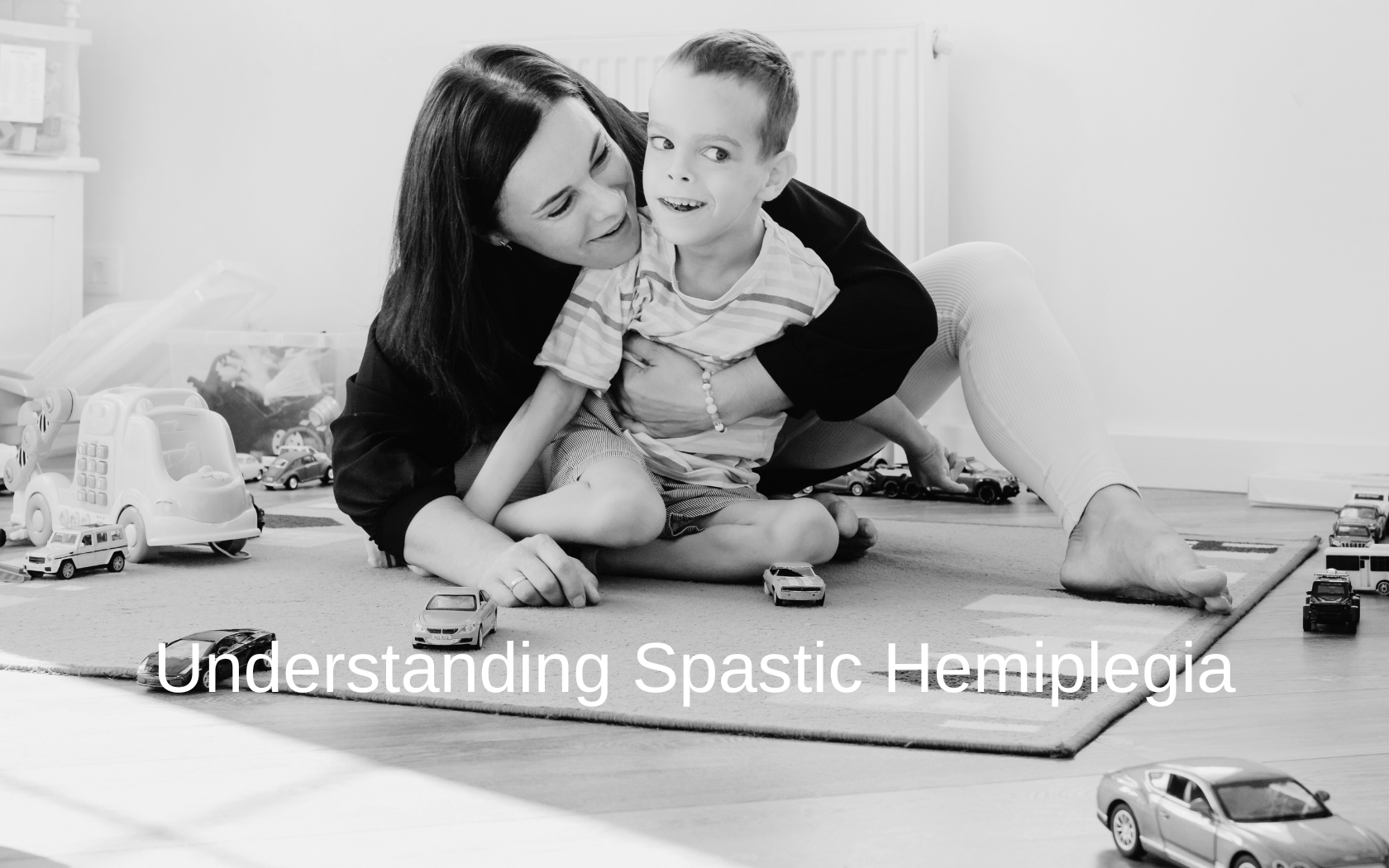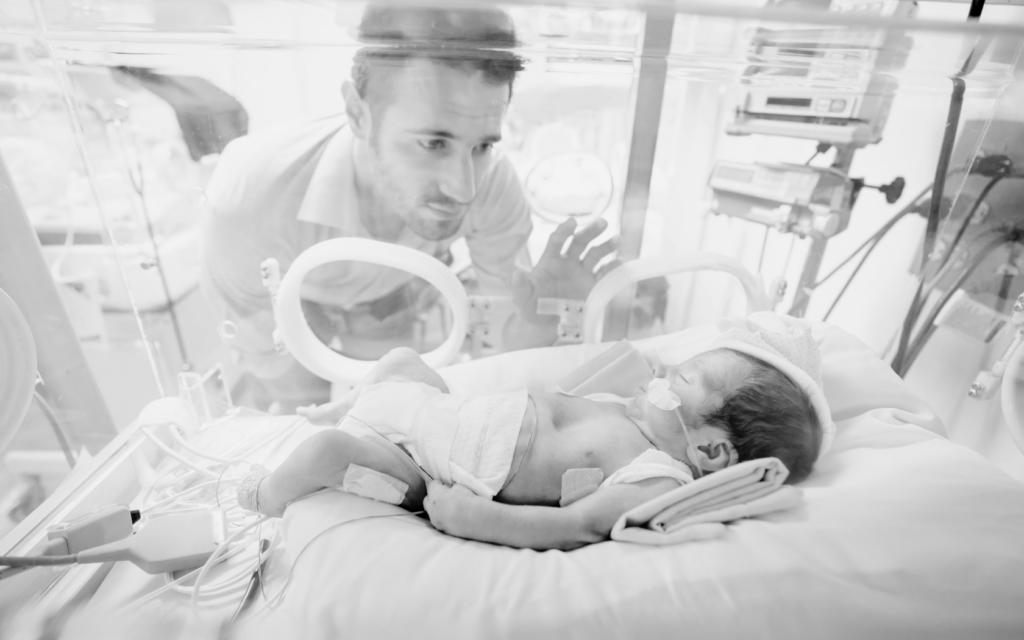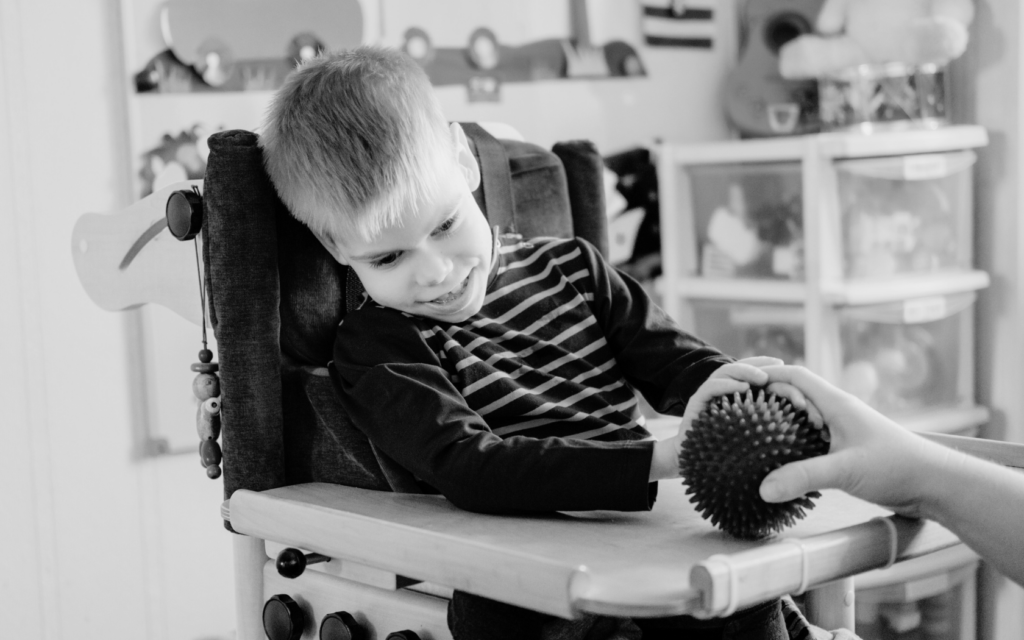“Spastic hemiplegia cerebral palsy” might sound like a mouthful. But it’s actually not too complicated once you break it down. Cerebral palsy is a condition that affects how your body moves. It usually occurs because something goes awry in the brain while it’s still developing before a baby is born.
“Spastic hemiplegia” is a type of cerebral palsy that affects just one side of the body. Let’s dissect those two terms:
- Spastic: This means the muscles are stiff or tight. Moving and walking smoothly can be tricky.
- Hemiplegia: This means the illness affects one side of the body.
So, if someone has spastic hemiplegia cerebral palsy, it means they might have trouble moving one side of their body smoothly because the muscles on that side are tight or stiff. It can affect things like walking, using their arm, or even just doing everyday tasks.
But everyone who has this type of cerebral palsy (CP) might experience it a bit differently from the next person. Also, it doesn’t necessarily mean a person can’t walk or carry out daily tasks. With treatment, many people with spastic hemiplegic CP can live independent lives.

What Causes Spastic Hemiplegia?
The usual cause of spastic hemiplegic CP is damage to a baby’s developing brain, usually before, during, or shortly after birth. Some potential causes include:
- Maternal infections (such as rubella or cytomegalovirus).
- Maternal health conditions (such as thyroid disorders or high blood pressure).
- Exposure to toxins or drugs during pregnancy.
- Genetic factors, like predispositions or mutations.
- Complications during labor and delivery (such as asphyxia (lack of oxygen), premature birth, low birth weight, or neonatal stroke.)
- Infections or head injuries that occur after the child’s birth.
Sometimes the cause of CP is simply “unknown”. There may have been no way to predict or prevent it. Other times, CP develops because a doctor mishandles the labor and birth process. If you suspect a doctor’s mistake may have played a part in your child’s injury, it’s important to speak with a birth injury lawyer.
Symptoms of Spastic Hemiplegia
Spastic hemiplegia symptoms only occur on one side of the body. They vary by child. Sometimes the symptoms don’t show up until a child is older.
The main symptom is muscle stiffness on one side of the body. This can have a lot of implications, such as:
- Arms or legs feel “stuck” or difficult to move.
- Walking can be tricky because one side of the body “drags” when the person tries to take a step. Sometimes people with this condition walk on their toes.
- Keeping balance might be tough.
- Muscles can suddenly tighten up and cause spasms or cramps.
- Stretching or reaching for something can be difficult because there’s a limited range of motion.
Children with spastic hemiplegia can also develop associated disorders, like epilepsy and attention deficit hyperactivity disorder (ADHD).
Like other types of CP, spastic hemiplegia isn’t progressive. That means it doesn’t get worse over time.

Prognosis and Treatment for Spastic Hemiplegia
There’s no cure for spastic hemiplegic cerebral palsy. However, physical therapy and other treatments can work wonders to help people with this type of CP live more comfortable and fulfilling lives.
Common treatment methods with spastic CP include:
- Physical therapy
- Occupational therapy
- Speech therapy
- Medications
- Orthotics (like braces or splints)
- Aquatic therapy
- Surgery
Usually, a treatment plan involves a combination of methods. The plan should fit the person’s needs and goals.
In general, the earlier a child gets treatment, the better their prognosis will be. Every child with CP will have lifelong symptoms. The extent of impairment varies by person. Some people have mild symptoms that barely impact daily life, while others have significant disabilities requiring ongoing support and assistance.
But no matter the severity of their condition, ongoing treatment can optimize the life quality for people with CP. Many individuals with spastic hemiplegia can achieve a level of functional independence. They can carry out daily tasks, improve their mobility, get an education, and hold jobs.

Legal Help for Parents of Children with Spastic Hemiplegia
As a parent of a child with spastic hemiplegia, you want them to have the highest quality of life possible. To do this, you’ll need to take a multidisciplinary approach. Healthcare professionals, therapists, educators, and family should all play a part in supporting your child.
In addition, there’s one more person you may want to call to help ensure your child receives the treatment they need and deserve: a birth injury lawyer. In instances where CP develops because of a healthcare worker’s negligence, a child’s family may be entitled to seek compensation. This compensation can pay for therapy, medical devices, past hospital bills, and more. We invite you to schedule a free consultation here.




